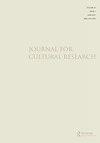Men and cockfight through the lens of multispecies ethnography: from the symbolism of masculinity to multispecies collaboration
IF 0.6
Q1 CULTURAL STUDIES
引用次数: 1
Abstract
ABSTRACT This paper calls for another perspective on cockfight and the symbolism of masculinity. Previous research on cockfighting has its own perspective and interesting findings, one such work on the matter was that of Geertz who focused on the symbolism of cockfighting within the context of Balinese culture. I argue that, as anthropological studies develop a number of anthropological approaches that produce a more holistic ethnography also evolve. One of them is multispecies ethnography. This approach places culture and nature on one equal level of analysis. This research involves Kampung Laut People in Segara Anakan, Indonesia. The data is collected through observation and in-depth interviews through the ‘art of noticing’ method. The findings of this research show a different perspective in understanding the practice of cockfighting through interspecies collaboration. In terms of scientific contributions, this paper introduces a multispecies ethnographic approach as another approach to understanding the socio-cultural phenomenon of cockfighting and human interactions with non-human species. This perspective complements Geertz’s symbolic cultural perspective. In terms of its contribution to humanitarian issues, the holistic multispecies perspective employed within this research advocates for a balanced interrelation between humans and other species in creating a sustainable ecological system.多种族人种学视角下的男人与斗鸡:从男子气概的象征到多种族合作
本文从另一个角度探讨斗鸡和男子气概的象征意义。以前对斗鸡的研究有自己的观点和有趣的发现,其中一个这样的工作是Geertz,他专注于巴厘文化背景下斗鸡的象征意义。我认为,随着人类学研究的发展,产生更全面的民族志的许多人类学方法也在发展。其中之一是多物种人种学。这种方法把文化和自然放在一个平等的分析水平上。这项研究涉及印度尼西亚塞加拉阿纳坎的甘榜劳人。数据是通过观察和深度访谈,通过“注意的艺术”方法收集的。这项研究的结果显示了通过物种间合作来理解斗鸡实践的不同视角。在科学贡献方面,本文介绍了一种多物种人种志方法,作为理解斗鸡和人类与非人类物种相互作用的社会文化现象的另一种方法。这一观点与格尔茨的象征文化观点相辅相成。就其对人道主义问题的贡献而言,本研究中采用的整体多物种视角倡导人类与其他物种之间的平衡关系,以创造一个可持续的生态系统。
本文章由计算机程序翻译,如有差异,请以英文原文为准。
求助全文
约1分钟内获得全文
求助全文
来源期刊

Journal for Cultural Research
CULTURAL STUDIES-
CiteScore
1.40
自引率
0.00%
发文量
23
期刊介绍:
JouJournal for Cultural Research is an international journal, based in Lancaster University"s Institute for Cultural Research. It is interested in essays concerned with the conjuncture between culture and the many domains and practices in relation to which it is usually defined, including, for example, media, politics, technology, economics, society, art and the sacred. Culture is no longer, if it ever was, singular. It denotes a shifting multiplicity of signifying practices and value systems that provide a potentially infinite resource of academic critique, investigation and ethnographic or market research into cultural difference, cultural autonomy, cultural emancipation and the cultural aspects of power.
 求助内容:
求助内容: 应助结果提醒方式:
应助结果提醒方式:


